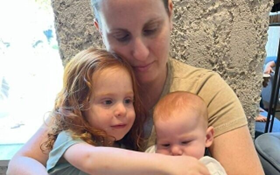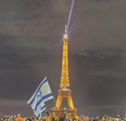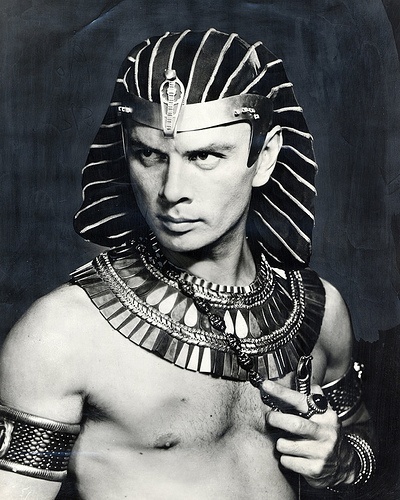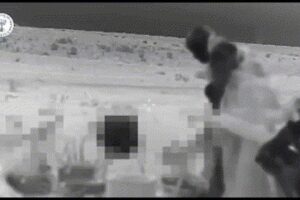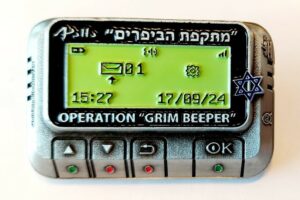On October 7, 2023, Hamas terrorists from Gaza killed nearly 1,200 innocent people and took 251 more hostage. This vile act of violence and antisemitism shocked the world. Images of these horrific acts flooded airwaves and news feeds across the globe. I was reminded that even in the darkest moment, light finds a way to shine through.
In the following anecdotes, we witness the power of the individual, the healing powers of kindness, and our remarkable capacity for heroism. We see how acts of kindness, courage, and bravery can help save lives, and hope that these examples of light can contribute to some healing in the world, promote inspired thought, and shine through the darkness.
Let There Be Light
Where can we find light in the face of inconceivable darkness? How can we seek out lightness when the darkness feels so impermeable? We can turn to the Torah. Page 1 – Genesis. This ancient document, chronicling a people who manage to survive in the face of tremendous hardship, epic barriers, and countless assaults.
In the beginning God created the heaven and the earth. Now the earth was unformed and void, and darkness was upon the face of the deep; and the spirit of God hovered over the face of the waters. And God said: ‘Let there be light.’ And there was light. And God saw the light, that it was good; and God divided the light from the darkness.
We cannot deny the existence of darkness or fully protect ourselves from its perils. We can channel the light that G-d brought to this planet on its first day. We must shine this light even in the darkest darks. We will continue to seek out light, and illuminate its radiance, throughout darkness.
You can read more about this here.
Always A Hero

Amongst the tragic accounts of the October 7th terrorist attack on innocent Israeli citizens, there are stories of heroism.
Oz Davidian, a farmer from the small village of Maslul, was not far from the Nova music festival when terrorists descended on the crowd and brutally assaulted innocent partygoers. Without a second thought, Oz jumped into action. While his wife and four children waited at home in a secured room, Oz drove directly into the danger zone and, in an act of remarkable bravery, brought 120 young people to safety.
Oz made about 20 trips between the festival and neighboring villages, continuing through the night and into the early hours of the morning. With terrorists in full control of the roads, Oz drove through gunfire past shattered cars and piles of corpses in order to save anyone he could. At one point, he even came face-to-face with terrorists and managed to get away unscathed while they shot at him.
Oz didn’t stop until he was sure he had saved everyone he could. Upon his return, he reported the unimaginable “evil” he had witnessed, and said “When you see hundreds of young people, dead and wounded and fleeing into the fields and terrorists shooting in every direction, you put everything to one side; the fear, the family and you go to get them out.”
His daughter, Oriah, said “he has always been my hero.”
You can read more about this story here.
Women Warriors

When terrorists engaged in an unprecedented surprise attack on October 7th, Israeli defense units scrambled to organize a counterstrike and prevent further destruction.
While some units struggled to assemble amongst the chaos, one group was able to quickly rally and jump into action. This all-female group of soldiers charged into battle, targeting terrorists ravaging Kibbutz Holit and standing strong over the course of 17-hours of non-stop combat.
Made permanent in 2022, this female battalion is normally stationed along the Egyptian border. These women wasted no time in the pursuit of protecting their country and preventing additional terror from unfolding.
Fighting for Families

On October 7th, when Shifra Buchris heard news of the attack on the Supernova musical festival, she immediately sprung into action. Despite it being the Sabbath, the 45-year-old Orthodox mother of 10 voluntarily headed into the treacherous scene to help save as many young people as possible.
Buchris and her colleagues entered the site in two personal, non-armored vehicles and embarked on a 12-hour fight to rescue victims. Navigating between the incoming bullets and piles of corpses, Bucharis and her team transported the wounded to safety.
A self-proclaimed “fighter at heart,” Bucharis says she was determined to “reunite as many children as possible with their families at home.” As a mother of 10, with 2 daughters actively fighting in the war, Bucharis couldn’t help but think of the families whose lives would be forever changed. Undoubtedly, her bravery and altruism ensured the reunion of countless families.
You can read more about this story here.
Patience & Hope

Just like many of his Jewish peers around the world, 12-year-old Yagil Yaakov was eagerly anticipating his upcoming bar mitzvah and diligently preparing for the big day. Then, on October 7th, his cheery demeanor turned to sheer horror when terrorists violently broke into his home in Kibbutz Nir Oz took Yagil, his brother Or, and their father, Yair, hostage.
In the days that followed, the owner of a nearby Judaica store noticed a custom tefillin bag, ordered by a family in Nir Oz, had not been picked up as scheduled. Knowing this community had been devastated in the recent attacks, he called the family to see how they were doing. Yagil’s mother, Ranana, informed him of the heartbreaking and inconceivable reality: her family, including the soon-to-be bar mitzvah boy, had been taken prisoner.
Shocked by this news and hoping to offer whatever support he could, the owner offered to refund the order. With Yagil in captivity, who knew how long it would be until he was able to perform the sacred ritual of becoming a bar mitzvah, if ever. Yagil’s mother, however, refused to accept the refund, insisting that “Yagil will come home, and there will be a giant celebration, with G‑d’s help.”
Nearly a month later, Ranana received a glimmer of hope. She knew Yagil was alive. A terrorist group released a video, featuring a tormented and distressed clip of her once jubilant son. Hope was not lost, and she continued to pray for her family’s release.
On November 27, after 51 days as hostages at the mercy of terrorists, Yagil, with his brother, returned to Israel, to his mother’s arms, and to the promise of becoming a bar mitzvah. His father remains captive in Gaza – g-d-willing he will return to his family and give his son the long-awaited gift of tefillin.
You can read more about this story here.
Tuna Miracle

A group of soldiers stationed at a refugee camp gathered for lunch, unpacking their standard-issue canned tuna in oil. Outside of wartime, many soldiers had picked up a common trick to enhance the meal’s flavor. They would light a match, toss it into the can, ignite the oil, and let the tuna smoke. With this technique in mind, one soldier instinctually lit a match and tossed it into the can.
A fellow soldier turned to him in a panic and urgently warned that they were surrounded by live ammunition. He grabbed the flaming can of tuna and hurled it as far as possible. Suddenly, a huge explosion erupted in the area where the can landed, prompting the soldiers to swiftly raise their guns in anticipation of an attack. To their surprise, white flags appeared in the distance. Remarkably, the can of tuna had landed inside a terrorist tunnel, where assailants were positioned to ambush the soldiers.
Believing they had been discovered, the terrorists emerged with hands raised. The can of tuna had miraculously led the soldiers directly to the terrorists, averting the ambush and ensuring the soldiers’ safety.
You can read more about this story here.




